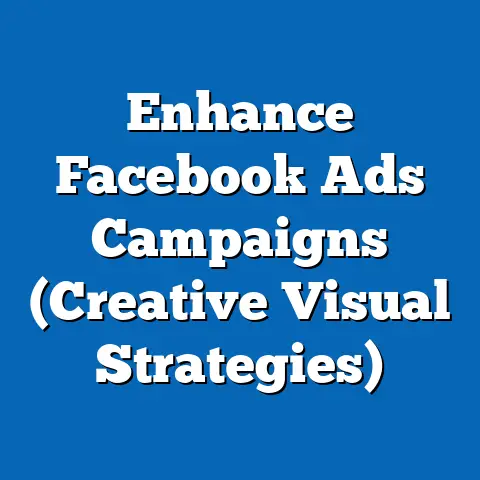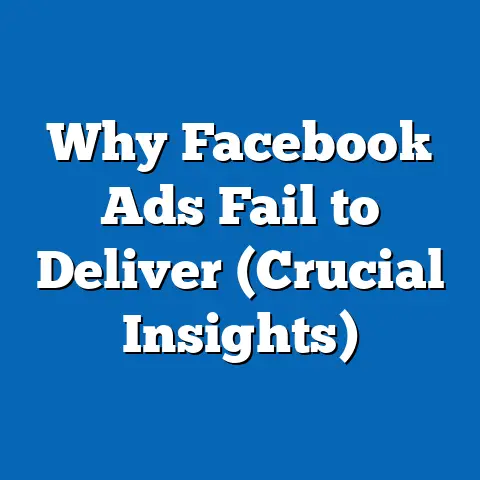Erase Ad History on Facebook (Expert Tips for Privacy)
Imagine Sarah, a savvy digital marketer, scrolling through her Facebook feed. She’s used to seeing ads – it’s part of her job to understand them. But lately, she’s noticed something unsettling. The ads are too accurate. They reflect not just her professional interests, but also personal searches, fleeting curiosities, and even conversations she’s had offline. A wave of unease washes over her. How much does Facebook really know? And more importantly, how can she take back control?
Sarah’s situation isn’t unique. We’re all leaving digital breadcrumbs everywhere we go online, and Facebook ad history is a particularly revealing one. It’s a detailed log of your interactions with ads on the platform, painting a picture of your interests, behaviors, and even your potential vulnerabilities. But the good news is, you’re not powerless. I’m here to guide you through the process of erasing your ad history on Facebook, reclaiming your privacy, and taking control of your digital footprint.
Understanding Facebook Ad History
Let’s start with the basics: what exactly is Facebook ad history? Simply put, it’s a record of all your interactions with ads on the platform. This includes:
- Clicks: Every time you click on an ad, Facebook logs it.
- Impressions: Even just seeing an ad contributes to your ad history.
- Engagement: Liking, commenting, sharing, or even hovering over an ad is recorded.
- Conversions: If you make a purchase after clicking on an ad, that’s tracked as well.
Facebook uses this data to build a profile of you, which is then used to target you with more relevant ads. This is why you might see ads for hiking boots after searching for “best hiking trails” online or ads for a particular brand of coffee after liking a post about it.
Why is this data valuable to advertisers?
Because it allows them to reach the right people with the right message at the right time. The more accurate the targeting, the higher the likelihood of a conversion (a purchase, a sign-up, etc.). Think of it as the holy grail of marketing – reaching the people who are most likely to be interested in what you have to offer.
How does it influence the ads you see?
Your ad history directly affects the ads you’re shown. Facebook’s algorithm analyzes your past interactions to predict what you might be interested in. This creates a feedback loop – the more you interact with certain types of ads, the more of those ads you’ll see.
Takeaway: Understanding Facebook ad history is the first step towards controlling your privacy. It’s about recognizing the data trail you’re leaving behind and understanding how it’s being used.
The Importance of Privacy on Social Media
In today’s digital age, privacy is a hot topic. We’re constantly bombarded with news stories about data breaches, privacy scandals, and the ever-increasing power of tech companies. Social media platforms, like Facebook, are often at the center of these discussions.
Growing Concerns:
User sentiments regarding privacy are shifting. People are becoming increasingly aware of how their data is being collected, used, and shared. Recent studies have shown a significant rise in concerns about data security on Facebook. For example, a Pew Research Center study found that a majority of Americans are not confident that social media companies protect their data.
Implications of Detailed Ad History:
Having a detailed ad history available to advertisers can have several implications for users:
- Targeted Manipulation: Advertisers can use this data to target you with ads that exploit your vulnerabilities or biases.
- Price Discrimination: You might be shown different prices for the same product or service based on your perceived wealth or willingness to pay.
- Privacy Violations: Your ad history can reveal sensitive information about your health, finances, or personal beliefs, which could be used to discriminate against you.
- Filter Bubbles: You might be trapped in a filter bubble, only seeing information that confirms your existing beliefs, which can lead to polarization and misinformation.
Personal Story: I remember working with a client who was running ads for a weight loss program. They were targeting users who had previously interacted with ads for unhealthy foods or weight loss products. While the targeting was effective, it felt a little…creepy. It highlighted the potential for ad targeting to exploit people’s insecurities.
Takeaway: Privacy on social media is not just about protecting your personal information; it’s about protecting yourself from manipulation, discrimination, and the erosion of your autonomy.
Step-by-Step Guide to Erasing Ad History on Facebook
Now, let’s get to the practical part: how to actually erase your ad history on Facebook. This is a multi-step process, but I’ll break it down into easy-to-follow instructions.
-
Navigate to the “Settings” Section:
- Log in to your Facebook account.
- Click on the downward-facing arrow in the top right corner of the screen.
- Select “Settings & Privacy” from the dropdown menu.
- Click on “Settings.”
-
Locate the “Ads” Settings:
- In the left-hand menu, click on “Ads.” This will take you to the Ads Preferences page.
-
Access “Ad Activity”:
- Within the Ads Preferences page, look for a section labeled “Ad Activity”. This is where Facebook stores your history of interactions with ads.
-
View and Manage Ad History:
- Clicking on “Ad Activity” will show you a list of ads you’ve interacted with, along with the dates and times of those interactions.
-
Deleting Specific Interactions:
- For each ad, you’ll see options to “Hide ad” or “Why am I seeing this ad?”.
- Clicking “Hide ad” will prevent you from seeing that specific ad again.
- Clicking “Why am I seeing this ad?” will give you insights into why Facebook targeted you with that ad and allow you to adjust your preferences.
-
Clearing “Off-Facebook Activity”:
- Navigate to “Off-Facebook Activity” in the left-hand menu.
- This section shows data that businesses share with Facebook about your activity on their websites and apps.
- You can clear this history by clicking “Disconnect Specific Activity.”
-
Ensuring Changes Take Effect:
- After making changes, it may take some time for them to fully propagate across Facebook’s systems.
- Check back periodically to ensure that the ads you’ve hidden are no longer appearing in your feed.
- Monitor your ad preferences to see if the changes you’ve made are reflected in the types of ads you’re being shown.
Navigate to the “Settings” Section:
- Log in to your Facebook account.
- Click on the downward-facing arrow in the top right corner of the screen.
- Select “Settings & Privacy” from the dropdown menu.
- Click on “Settings.”
Locate the “Ads” Settings:
- In the left-hand menu, click on “Ads.” This will take you to the Ads Preferences page.
Access “Ad Activity”:
- Within the Ads Preferences page, look for a section labeled “Ad Activity”. This is where Facebook stores your history of interactions with ads.
View and Manage Ad History:
- Clicking on “Ad Activity” will show you a list of ads you’ve interacted with, along with the dates and times of those interactions.
Deleting Specific Interactions:
- For each ad, you’ll see options to “Hide ad” or “Why am I seeing this ad?”.
- Clicking “Hide ad” will prevent you from seeing that specific ad again.
- Clicking “Why am I seeing this ad?” will give you insights into why Facebook targeted you with that ad and allow you to adjust your preferences.
Clearing “Off-Facebook Activity”:
- Navigate to “Off-Facebook Activity” in the left-hand menu.
- This section shows data that businesses share with Facebook about your activity on their websites and apps.
- You can clear this history by clicking “Disconnect Specific Activity.”
Ensuring Changes Take Effect:
- After making changes, it may take some time for them to fully propagate across Facebook’s systems.
- Check back periodically to ensure that the ads you’ve hidden are no longer appearing in your feed.
- Monitor your ad preferences to see if the changes you’ve made are reflected in the types of ads you’re being shown.
Tip: Be patient. It can take a few days for Facebook’s algorithm to adjust to your new preferences.
Verifying Successful Erasure:
- Pay attention to the ads you’re seeing. Are you still seeing ads that are based on your old interests?
- Check your ad preferences again to make sure your changes have been saved.
- Consider using a privacy-focused browser extension that blocks trackers and cookies.
Takeaway: Erasing your ad history is a proactive step towards reclaiming your privacy. It’s a process that requires patience and persistence, but the results are worth it.
Utilizing Facebook’s Privacy Tools
Erasing your ad history is just one piece of the puzzle. Facebook offers a range of privacy tools that can help you manage your ad experience and limit the data it collects.
“Off-Facebook Activity”:
This is a powerful tool that allows you to disassociate data collected from other websites and apps. Many businesses share data with Facebook about your activity on their sites, such as the products you view or the items you add to your cart. This data is then used to target you with more relevant ads.
By using “Off-Facebook Activity,” you can disconnect this data from your Facebook account, preventing it from being used for ad targeting. You can also choose to clear your entire “Off-Facebook Activity” history or disconnect future activity from specific businesses.
Adjusting Ad Personalization Settings:
Facebook allows you to adjust your ad personalization settings to limit the data it collects in the future. You can:
- Remove Interests: Facebook infers your interests based on your activity on the platform. You can remove these interests to prevent them from being used for ad targeting.
- Limit Data from Partners: You can limit the data that Facebook receives from its partners, such as data brokers and advertising networks.
- Control Ad Topics: You can choose to see fewer ads about certain topics, such as politics, religion, or social issues.
Personal Example: I personally use the “Off-Facebook Activity” tool regularly. I’m always surprised by the number of businesses that are sharing data with Facebook. Disconnecting this data has significantly reduced the number of targeted ads I see.
Takeaway: Facebook’s privacy tools give you more control over your data and your ad experience. Take the time to explore these tools and adjust your settings to your liking.
Best Practices for Maintaining Privacy on Facebook
Erasing your ad history and adjusting your privacy settings are important steps, but they’re not a one-time fix. Maintaining privacy on Facebook requires ongoing effort and vigilance.
Regularly Reviewing Privacy Settings:
Facebook’s privacy settings are constantly evolving. It’s important to regularly review your settings to ensure that they’re still aligned with your preferences. Pay attention to changes in Facebook’s privacy policies and adjust your settings accordingly.
Understanding the Implications of Sharing Personal Data:
Be mindful of the information you share on Facebook. Every post, like, comment, and share contributes to your digital footprint. Think before you post and consider the potential implications of sharing personal information.
Utilizing “Ad Preferences”:
Use the “Ad Preferences” tool to tailor your ad experience. You can:
- Hide Ads: Hide ads that you find irrelevant or offensive.
- Report Ads: Report ads that violate Facebook’s advertising policies.
- Adjust Interests: Add or remove interests to refine the types of ads you’re shown.
Pro Tip: Consider using a VPN (Virtual Private Network) to encrypt your internet traffic and hide your IP address. This can help prevent Facebook from tracking your online activity.
Takeaway: Maintaining privacy on Facebook is an ongoing process. It requires awareness, vigilance, and a willingness to take control of your data.
Real-Life Examples and Case Studies
Let’s look at some real-life examples of people who have successfully managed their ad history for better privacy outcomes.
Case Study 1: The Concerned Parent:
A parent, concerned about the types of ads their child was seeing on Facebook, decided to take action. They cleared their child’s ad history, adjusted their privacy settings, and limited the data that Facebook was collecting. As a result, their child started seeing fewer ads for age-inappropriate content and more ads for educational resources.
Case Study 2: The Privacy Advocate:
A privacy advocate, passionate about data security, made it a habit to regularly erase their ad history and adjust their privacy settings. They also used a VPN and a privacy-focused browser extension. As a result, they felt more comfortable using Facebook and had greater peace of mind knowing that their data was protected.
Personal Anecdote: I once worked with a small business owner who was running ads on Facebook. They were initially hesitant to use ad targeting, fearing that it would be too intrusive. However, after learning about Facebook’s privacy tools and how to manage ad preferences, they became more comfortable with the process. They even started using ad targeting to reach customers who were genuinely interested in their products, while respecting their privacy.
Takeaway: These examples demonstrate that managing your ad history can have a positive impact on your privacy, your user experience, and even your business.
Conclusion
We’ve covered a lot of ground in this article. We’ve explored what Facebook ad history is, why it’s important to manage it, and how to erase it. We’ve also discussed Facebook’s privacy tools and best practices for maintaining privacy on the platform.
The key takeaways are:
- Understanding is Power: The more you understand how Facebook collects and uses your data, the more control you have over your privacy.
- Proactive Steps are Essential: Erasing your ad history and adjusting your privacy settings are proactive steps that can significantly improve your privacy.
- Vigilance is Key: Maintaining privacy on Facebook requires ongoing effort and vigilance.
- Tools are Available: Facebook offers a range of privacy tools that can help you manage your ad experience and limit the data it collects.
I encourage you to take the time to implement the steps outlined in this article. Erase your ad history, adjust your privacy settings, and become more mindful of your interactions on Facebook. By doing so, you can reclaim your privacy and take control of your digital footprint.
Remember, your privacy is worth protecting. Don’t let Facebook or any other social media platform dictate your online experience. Take control and create a digital environment that respects your privacy and empowers you to be your authentic self.





